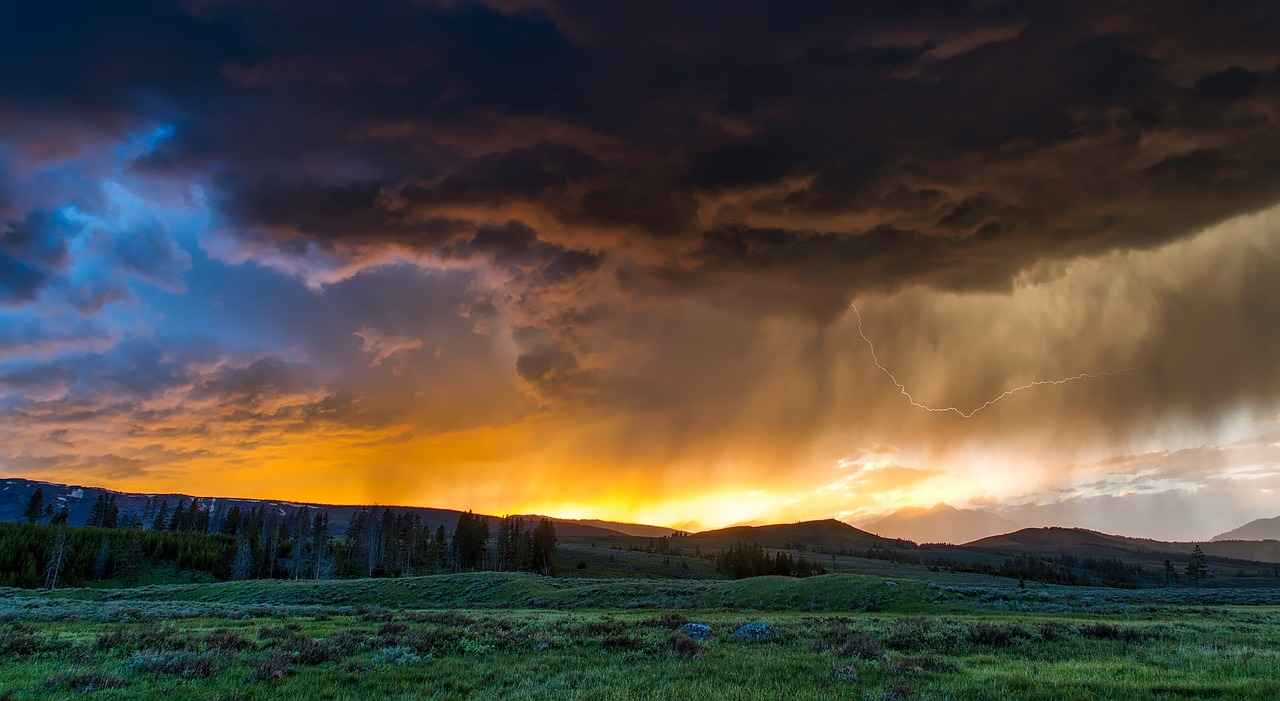This article provides a comprehensive overview of the current weather conditions in West Bengal. It covers essential aspects such as temperature, humidity, precipitation, and forecasts for the upcoming days, ensuring you stay informed and prepared.
Current Weather Conditions in West Bengal
Stay updated with the latest weather developments in West Bengal. The current temperature is around 28°C with humidity levels at 75%. The atmospheric pressure is stable, providing a comfortable environment for outdoor activities.
Daily Temperature Forecast
- Morning: Expect temperatures to range between 20°C and 24°C, ideal for early risers.
- Afternoon: Peak temperatures may reach up to 32°C, so plan accordingly.
- Evening: The temperature will cool down to around 26°C, perfect for evening outings.
Precipitation Predictions
Rainfall is expected later in the week, with a 60% chance of showers on Thursday. It’s advisable to carry an umbrella if you’re heading out.
Humidity Levels and Comfort Index
The high humidity levels can make it feel warmer than actual temperatures. On particularly humid days, it’s recommended to stay hydrated and wear light clothing.
Wind Speed and Direction
Winds are currently blowing at a speed of 10 km/h from the northeast, which can provide a slight cooling effect during the hotter parts of the day.
Weather Alerts and Warnings
Keep an eye on local weather alerts for any severe conditions. Staying informed will help you avoid any unexpected weather-related issues.
Conclusion: Preparing for West Bengal’s Weather
In summary, understanding the weather patterns in West Bengal is crucial for planning your activities. Whether you’re enjoying the cooler mornings or bracing for afternoon heat, being aware of the conditions will help you make the most of your day.

Current Weather Conditions in West Bengal
Stay updated with the latest weather conditions in West Bengal, where the climate can significantly influence daily activities. Understanding the current weather is essential for planning your day, whether you’re heading to work, school, or enjoying outdoor activities.
As of today, West Bengal is experiencing a variety of weather conditions. The temperature currently hovers around 30°C, with fluctuations expected throughout the day. Early mornings tend to be cooler, offering a refreshing start, while afternoons can see temperatures rise, making it crucial to stay hydrated.
In addition to temperature, humidity levels are also a key factor in the overall comfort index. Currently, humidity levels stand at approximately 80%, which can make the air feel warmer than the actual temperature. This high humidity can lead to a sticky feeling, especially during peak afternoon hours.
Furthermore, the atmospheric pressure is recorded at 1012 hPa, indicating stable weather conditions. However, fluctuations in pressure can signal upcoming changes, such as potential rainfall or storms. Therefore, it’s wise to keep an eye on the forecast, especially if planning outdoor activities.
For those interested in precipitation, today’s forecast suggests a 20% chance of rain later in the evening, which could bring some relief from the heat. It’s advisable to carry an umbrella or raincoat if you’ll be out and about.
In summary, being aware of the current weather conditions in West Bengal, including temperature, humidity, and atmospheric pressure, is crucial for making informed decisions throughout your day. Stay tuned for updates to ensure you’re always prepared for whatever the weather may bring!

Daily Temperature Forecast
Understanding the in West Bengal is crucial for planning your activities and ensuring comfort throughout the day. The climate in this region can vary significantly, so being aware of the expected temperature ranges can help you make informed decisions.
In West Bengal, you can typically expect the morning temperatures to be pleasantly cool, especially during the winter months. This is the perfect time for outdoor exercises or leisurely walks. As the day progresses, temperatures tend to rise, often peaking in the afternoon. It is essential to pay attention to these fluctuations to avoid discomfort and heat exhaustion.
| Time of Day | Expected Temperature (°C) | Recommended Activities |
|---|---|---|
| Morning (6 AM – 10 AM) | 18 – 24 | Jogging, Yoga, Outdoor Breakfast |
| Afternoon (12 PM – 4 PM) | 30 – 36 | Indoor Activities, Hydration Breaks |
| Evening (5 PM – 8 PM) | 24 – 28 | Evening Walks, Family Gatherings |
Additionally, it is important to consider the humidity levels in conjunction with temperatures. High humidity can make the air feel warmer than it actually is, which may affect your comfort levels. Staying hydrated and wearing breathable clothing can help mitigate the effects of high humidity.
In conclusion, keeping an eye on the daily temperature forecast in West Bengal allows you to plan your day effectively. By understanding the temperature ranges and humidity levels, you can engage in activities that suit the weather, ensuring a comfortable and enjoyable experience.
Morning Temperature Trends
The mornings in West Bengal are often characterized by a delightful coolness that invigorates the senses. As the sun rises, temperatures typically range from 18°C to 24°C, creating a refreshing environment that is perfect for early risers. This moderate temperature is especially beneficial for those who enjoy outdoor activities such as jogging, walking, or simply soaking in the natural beauty of the region.
One of the notable aspects of the morning atmosphere in West Bengal is the presence of morning dew. This phenomenon not only enhances the freshness of the air but also contributes to the overall humidity levels, making the mornings feel even more pleasant. As the dew evaporates, it leaves behind a crispness in the air that is invigorating and energizing.
For those planning morning outings, it is advisable to wear light layers. As the day progresses, temperatures can rise significantly, so dressing in breathable fabrics can help maintain comfort. Activities like yoga or nature walks are particularly enjoyable during these cooler hours, allowing individuals to connect with nature before the heat of the day sets in.
Additionally, the scenic beauty of West Bengal during the early hours is unparalleled. The lush greenery, coupled with the soft morning light, makes it an ideal time for photography or simply enjoying a tranquil moment in nature. Early mornings also provide an excellent opportunity for bird watching, as many species are most active at this time.
In summary, the morning temperatures in West Bengal offer a refreshing start to the day, making it a perfect time for outdoor activities and enjoying the natural beauty of the region. With the right attire and a plan for engaging activities, mornings can be a delightful experience.
Impact of Morning Dew
Morning dew is a natural phenomenon that occurs during the early hours, particularly in regions like West Bengal. This moisture forms when the temperature drops overnight, causing water vapor in the air to condense on surfaces such as grass, leaves, and even roads. Understanding the effects of morning dew is crucial as it significantly influences humidity levels and overall comfort during the early hours.
In West Bengal, the presence of morning dew can elevate the humidity levels in the atmosphere. This increase in humidity can create a cooler and refreshing environment, making mornings particularly enjoyable for outdoor activities. However, as the sun rises and temperatures begin to climb, the moisture evaporates, leading to a rise in humidity that can make the heat feel more intense as the day progresses.
| Time of Day | Effect of Dew | Humidity Level |
|---|---|---|
| Early Morning | Cool and refreshing | Moderate |
| Late Morning | Increasing warmth | High |
Moreover, the moisture from morning dew can impact the overall comfort level. In the early hours, this humidity can make the air feel crisp and invigorating, perfect for morning jogs or leisurely walks. However, as the day heats up, the lingering humidity can lead to discomfort, making it essential for residents and visitors to plan their activities accordingly.
In conclusion, the impact of morning dew in West Bengal is twofold: it provides a refreshing start to the day while also contributing to rising humidity levels as the day progresses. Understanding this balance can help individuals make informed decisions about their morning routines and outdoor plans.
Advice for Morning Activities
When planning your mornings in West Bengal, it’s essential to take advantage of the cooler temperatures that characterize the early hours. Here are some practical tips on suitable clothing and activities to enjoy during this refreshing time of day.
As the mornings can be pleasantly cool, dressing appropriately will enhance your comfort. Opt for lightweight layers that you can easily adjust as the day warms up. Here are some clothing suggestions:
- Long-sleeve shirts or light sweaters to keep warm during the cooler hours.
- Comfortable pants or capris that allow for ease of movement.
- Breathable fabrics such as cotton or linen to ensure comfort as temperatures rise.
- Comfortable footwear, especially if you plan to walk or engage in outdoor activities.
The cooler mornings in West Bengal present a perfect opportunity to engage in various activities. Consider the following:
- Morning walks or jogs: Take advantage of the fresh air and serene environment.
- Yoga or meditation: The calmness of the morning is ideal for mindfulness practices.
- Outdoor sports: Whether it’s badminton, cycling, or a game of cricket, the cooler temperatures are perfect for physical activity.
- Visiting local markets: Experience the vibrant morning markets, where you can find fresh produce and local goods.
Don’t forget to appreciate the beauty of nature during the early hours. The morning dew and chirping birds create a picturesque setting, making it a great time for photography or simply enjoying the tranquility.
By planning your clothing and activities around the cooler morning hours, you can make the most of your time in West Bengal, ensuring a refreshing start to your day.
Afternoon Temperature Peaks
Understanding the in West Bengal is crucial for anyone looking to plan outdoor activities or manage their energy levels throughout the day. The region experiences significant temperature fluctuations, particularly during the peak afternoon hours, which typically range from 12 PM to 4 PM.
During these hours, temperatures can soar, often reaching between 30°C to 40°C (86°F to 104°F), depending on the season. This heat can have a profound impact on your plans, affecting everything from outdoor sports to simple errands. It’s essential to monitor these temperature peaks to ensure you stay comfortable and safe.
Many residents and visitors find that the intense heat can lead to increased fatigue and decreased energy levels. Therefore, it is advisable to schedule outdoor activities either in the cooler morning hours or later in the evening when temperatures drop. Additionally, staying hydrated is crucial during these peak hours to avoid heat-related illnesses.
Here are some practical tips to consider during the afternoon heat:
- Stay Hydrated: Drink plenty of water to maintain hydration levels.
- Wear Light Clothing: Choose breathable fabrics that allow for air circulation.
- Plan Indoor Activities: If possible, engage in indoor activities during the hottest part of the day.
- Use Sunscreen: Protect your skin from harmful UV rays if you must be outdoors.
In conclusion, being aware of the in West Bengal can help you make informed decisions about your daily activities. By planning accordingly and taking necessary precautions, you can enjoy your time outdoors while minimizing the risks associated with extreme heat.

Precipitation Predictions
Stay updated on any expected rainfall in West Bengal, as understanding precipitation predictions can significantly influence your daily plans. This region experiences a variety of weather patterns, and being aware of the likelihood of showers and thunderstorms is essential for both residents and visitors alike.
In West Bengal, the monsoon season typically brings heavy rainfall, which can lead to sudden changes in weather. It is crucial to monitor forecasts regularly to prepare for unexpected downpours that might disrupt outdoor activities. The meteorological department provides updates that include the probability of rain, expected rainfall amounts, and potential thunderstorms.
Why is Rainfall Prediction Important?
- Planning Outdoor Activities: Knowing when rain is expected helps in scheduling events or outings.
- Travel Safety: Rain can affect road conditions and visibility, making it vital for travelers to stay informed.
- Agricultural Impact: For farmers, understanding rainfall patterns is crucial for crop management and irrigation planning.
During the rainy season, weather forecasts often highlight the likelihood of thunderstorms that can accompany rainfall. These storms may bring strong winds and lightning, posing risks to safety. It is advisable to stay indoors during severe weather and follow local advisories.
To ensure you are well-prepared, consider these practical tips:
- Check weather apps or websites regularly for real-time updates.
- Keep an umbrella or raincoat handy, especially during the monsoon months.
- Plan indoor activities on days with high chances of rain.
In conclusion, staying informed about precipitation predictions in West Bengal is vital for making safe and effective plans. By keeping an eye on the weather updates, you can navigate your day with confidence, regardless of the rain.
Seasonal Rainfall Patterns
play a crucial role in shaping the climate and daily life in West Bengal. This region experiences a distinct monsoon season, typically from June to September, which significantly influences the amount of rainfall.
The monsoon is characterized by heavy downpours, often leading to significant changes in the landscape and lifestyle. During this period, the state receives about 70-80% of its annual rainfall, which is essential for agriculture, replenishing water bodies, and sustaining local ecosystems.
In West Bengal, the impact of monsoon rainfall extends beyond agriculture. It affects transportation, daily commuting, and even social activities. Roads can become waterlogged, disrupting travel plans and leading to delays. On the other hand, the rains are a boon for farmers, as they help in the cultivation of rice and other crops, which are vital for the local economy.
| Month | Average Rainfall (mm) |
|---|---|
| June | 300 |
| July | 400 |
| August | 350 |
| September | 200 |
Additionally, the post-monsoon season from October to November brings a transition in weather patterns. The rainfall decreases significantly, leading to cooler temperatures and a more comfortable atmosphere. This time is often marked by festivals and outdoor activities, as the humidity levels drop, making it a pleasant period for residents.
Overall, understanding the seasonal trends of rainfall in West Bengal is essential for adapting to the local climate. Preparing for the monsoon with appropriate measures can mitigate its impact on daily life, ensuring that both agricultural and urban activities can proceed smoothly.
Effect of Rain on Outdoor Activities
When planning outdoor activities in West Bengal, it’s crucial to consider the potential impact of rain. The region experiences a significant amount of rainfall, particularly during the monsoon season, which can disrupt various outdoor plans. Understanding how rain affects these activities can help you make informed decisions and ensure a more enjoyable experience.
- Impact on Sports and Recreation: Rain can make outdoor sports like cricket, football, or basketball less enjoyable or even unsafe. Wet fields can lead to injuries, while slippery surfaces can hinder performance. It’s advisable to check weather forecasts before organizing such events.
- Travel and Transportation: Heavy rain can lead to waterlogged roads and traffic disruptions. If you plan to travel, consider the possibility of delays and plan accordingly. Always keep an umbrella or raincoat handy.
- Outdoor Events and Gatherings: For picnics, weddings, or community events, rain can pose a significant challenge. Setting up tents or moving the event indoors can be a practical solution. Always have a contingency plan in place.
- Health Considerations: Prolonged exposure to wet conditions can lead to health issues such as colds or flu. Dress appropriately for the weather, and avoid staying outdoors for extended periods during heavy rain.
- Enjoying the Rain: On the positive side, rain can create a unique atmosphere for certain activities. Enjoying a walk in the rain or engaging in photography can offer a refreshing change of pace. Just remember to stay safe and dry!
In conclusion, while rain can pose challenges to outdoor activities in West Bengal, being prepared and adaptable can help you make the most of your plans. Always stay informed about the weather and have backup options ready to ensure a successful outing, regardless of the conditions.

Humidity Levels and Comfort Index
The weather in West Bengal is characterized by its unique blend of temperature and humidity, which significantly impacts the overall comfort index. Understanding how these humidity levels influence our perception of heat or cold is essential for both residents and visitors alike.
How Humidity Affects Perceived Temperature
Humidity is the amount of moisture present in the air, and in West Bengal, it can reach notably high levels, especially during the monsoon season. When humidity levels rise, the air feels warmer than it actually is due to the body’s reduced ability to cool itself through perspiration. This phenomenon can lead to discomfort, making hot days feel even more oppressive.
The Comfort Index Explained
The comfort index is a measure that combines temperature and humidity to determine how hot or cold it feels outside. In West Bengal, a high humidity level can elevate the comfort index significantly, often leading to a “feels-like” temperature that is several degrees higher than the actual temperature. For example, a temperature of 30°C with 80% humidity can feel like 37°C, making outdoor activities challenging.
Practical Tips for Coping with High Humidity
- Stay Hydrated: Drink plenty of water to help regulate your body temperature.
- Dress Appropriately: Wear light, breathable fabrics to facilitate moisture evaporation.
- Limit Outdoor Activities: Try to stay indoors during peak humidity hours, typically in the afternoon.
- Use Fans or Air Conditioning: These can help circulate air and lower the perceived temperature.
Conclusion
In summary, humidity levels in West Bengal play a crucial role in determining the overall comfort index. By understanding the relationship between humidity and temperature, individuals can take proactive steps to enhance their comfort during hot and humid days. Staying informed about daily humidity levels can significantly improve your outdoor experiences in this vibrant region.
Understanding Humidity’s Impact
Humidity plays a crucial role in shaping our daily experiences, especially in regions like West Bengal where high humidity levels are common. When humidity rises, it can significantly affect how we perceive temperature, making it feel considerably warmer than the actual air temperature. This phenomenon occurs because high humidity levels hinder the body’s natural cooling mechanism, which is primarily through the evaporation of sweat.
As the moisture in the air increases, the body struggles to release heat effectively. The heat index, which combines air temperature and relative humidity, often indicates a much higher temperature than what the thermometer shows. For instance, a temperature of 30°C (86°F) with 70% humidity can feel like 38°C (100°F). This discrepancy can lead to discomfort and fatigue, especially during outdoor activities.
- Daily Activities: High humidity can make even simple tasks feel exhausting. It’s essential to plan outdoor activities during cooler parts of the day, such as early mornings or late evenings.
- Hydration: Staying hydrated is vital. Increased sweating due to high humidity can lead to dehydration if fluid intake is not sufficient.
- Clothing Choices: Wearing light, breathable fabrics can help mitigate discomfort. Loose-fitting clothes allow for better air circulation and sweat evaporation.
Moreover, high humidity can exacerbate health issues such as asthma, allergies, and heat-related illnesses. Therefore, being aware of humidity levels and their potential impact on comfort and health is essential for everyone, particularly during the summer months.
In conclusion, understanding the implications of humidity can help in making informed decisions about daily activities and health precautions. By adjusting our schedules and attire accordingly, we can enhance our comfort and well-being during periods of high humidity.
Tips for Staying Comfortable
When the humidity levels soar in West Bengal, staying comfortable can be a challenge. Here are some practical tips to help you cope with the heat and humidity during those sweltering days.
- Stay Hydrated: Drink plenty of water throughout the day. Hydration is key to maintaining your body temperature and preventing heat-related illnesses. Aim for at least 8-10 glasses of water daily, and consider electrolyte-rich drinks if you’re sweating excessively.
- Wear Light Clothing: Opt for loose-fitting, lightweight, and breathable fabrics such as cotton or linen. These materials allow air circulation and help wick moisture away from your skin, keeping you cooler.
- Limit Outdoor Activities: Try to plan your outdoor activities for the cooler parts of the day, like early mornings or late evenings. Avoid strenuous exercise during peak heat hours, typically between 10 AM and 4 PM.
- Use Fans and Air Conditioning: If possible, stay indoors in air-conditioned spaces. If air conditioning is not available, use fans to circulate air. Placing a bowl of ice in front of a fan can create a cool breeze.
- Take Cool Showers: A quick shower with cool water can help lower your body temperature. It’s a refreshing way to beat the heat and reduce humidity discomfort.
- Close Blinds and Curtains: Keep your living spaces cool by closing blinds or curtains during the hottest parts of the day. This helps block out direct sunlight and reduces indoor temperatures.
- Eat Light Meals: Heavy meals can increase your body temperature. Opt for lighter meals that are easier to digest, such as salads and fruits, which also contain high water content.
By implementing these strategies, you can enhance your comfort and enjoy your time in West Bengal, even on the most humid days. Remember to listen to your body and take breaks as needed!

Wind Speed and Direction
Understanding the Wind Patterns in West Bengal
Wind speed and direction play a crucial role in shaping the weather conditions in West Bengal. These factors not only influence temperature and precipitation but also significantly affect outdoor activities and overall comfort levels.
Prevailing Wind Speeds
The average wind speeds in West Bengal can vary greatly depending on the season and geographical location. Typically, wind speeds range from 5 to 15 km/h, with stronger gusts during the monsoon season. Understanding these speeds can help residents and visitors plan their outdoor activities effectively.
Wind Direction and Its Effects
In West Bengal, the prevailing winds generally blow from the southwest during the monsoon months, bringing moisture-laden air that results in heavy rainfall. Conversely, during the winter months, winds tend to shift towards the northeast, leading to cooler and drier conditions. This shift can significantly impact daily life, including agriculture and tourism.
Impact on Weather Conditions
Wind direction and speed can dramatically alter the perceived temperature. For instance, a strong breeze can make hot days feel more bearable, while stagnant air can exacerbate discomfort during humid conditions. It is essential to monitor wind conditions to prepare for temperature fluctuations.
Seasonal Wind Patterns
- Summer: Winds are generally light and variable, contributing to hot and humid conditions.
- Monsoon: Strong southwest winds dominate, leading to increased rainfall and cooler temperatures.
- Winter: Northeastern winds bring cooler, dry air, making it a pleasant season for outdoor activities.
Conclusion
Understanding the prevailing wind speeds and directions in West Bengal is vital for anyone looking to engage in outdoor activities or simply stay comfortable. By keeping an eye on wind conditions, you can effectively plan your day and make the most of the beautiful weather this region has to offer.
How Wind Affects Temperature
Understanding the Intricate Relationship Between Wind Speed and Temperature
The interplay between wind speed and temperature is a crucial aspect of weather that significantly influences our daily experiences and perceptions. When the wind blows, it can alter how warm or cold we feel, regardless of the actual temperature reading. This phenomenon is often referred to as the wind chill effect in colder conditions and can also influence our comfort levels during hot weather.
Wind Chill: How It Works
In colder climates, the wind chill factor is particularly noticeable. As the wind speed increases, it removes heat from our bodies more rapidly, making it feel significantly colder than the actual temperature. For instance, if the temperature is 30°F but the wind is blowing at 20 mph, the wind chill can make it feel like it’s 20°F. This can lead to a higher risk of frostbite and hypothermia, especially if proper precautions aren’t taken.
Heat Index: The Role of Wind in Warm Weather
Conversely, during warmer months, wind can provide a cooling effect. A gentle breeze can help evaporate sweat from our skin, making us feel cooler even when temperatures are high. However, if the wind is too strong and hot, it can lead to an uncomfortable situation known as a heat index, where the combination of high temperature and humidity creates a much hotter feel. Understanding these effects is essential for planning outdoor activities safely.
Seasonal Variations in Wind and Temperature
The relationship between wind and temperature is not static; it changes with the seasons. In West Bengal, for instance, the summer months often bring hot winds that can raise the perceived temperature significantly. In contrast, winter winds can lead to a sharp drop in perceived warmth. Monitoring these seasonal changes can help individuals prepare better for the weather.
Conclusion
In summary, the interaction between wind speed and temperature is a vital component of weather that influences our comfort and safety. By understanding how wind affects temperature, we can make more informed decisions about our daily activities, ensuring we remain comfortable and protected from the elements.
Wind Patterns in Different Seasons
Understanding the influence of seasonal changes on wind patterns in West Bengal is crucial for grasping the region’s climate dynamics. The state’s geographical location, with the Bay of Bengal to the south and the Himalayas to the north, plays a significant role in shaping its wind patterns throughout the year.
During the summer months, typically from March to June, West Bengal experiences the hot and dry winds known as the loo. These winds originate from the northwestern regions of India and can lead to increased temperatures, often exceeding 40°C. The intense heat causes a drop in humidity levels, making the air feel dry and uncomfortable. As the summer progresses, the southwest monsoon begins to influence the wind patterns, bringing moisture-laden winds from the Arabian Sea.
With the onset of the monsoon in June, the winds shift dramatically. The southwest monsoon winds bring heavy rainfall, significantly altering the local climate. This season lasts until September and is characterized by strong winds and frequent thunderstorms. The abundant rainfall replenishes the region’s water bodies, but it also affects daily life, with flooding being a common concern in many areas.
As the monsoon recedes, the winds shift again in the autumn months (October to November). The air becomes cooler and drier, marking a transition period. The winds from the north start to dominate, leading to a pleasant climate, ideal for outdoor activities.
In winter (December to February), the winds are predominantly from the north and northeast. These winds bring cooler temperatures, often dropping to around 10°C in some areas. The dry and cool air during this season contributes to the overall comfort of the climate, making it a popular time for tourism and outdoor events.
In summary, the seasonal changes in West Bengal significantly influence wind patterns, which in turn affect local climate conditions. Understanding these patterns can help residents and visitors alike to better prepare for the varying weather throughout the year.

Weather Alerts and Warnings
Staying informed about weather alerts and warnings is crucial for the safety and well-being of residents in West Bengal. Given the region’s diverse climate, it is essential to be aware of any potential hazards that could arise from adverse weather conditions.
Weather alerts can range from simple advisories to severe warnings, indicating the possibility of dangerous conditions such as heavy rain, thunderstorms, or cyclones. Understanding these alerts can significantly enhance your preparedness and response strategies.
- Types of Weather Alerts:
- Advisory: Issued when conditions are favorable for hazardous weather but are not expected to be life-threatening.
- Watch: Indicates that severe weather is possible; stay alert and monitor updates.
- Warning: Issued when severe weather is imminent or occurring; take immediate action to ensure safety.
To effectively respond to these alerts, it is important to:
- Monitor Reliable Sources: Regularly check weather websites, local news channels, and official government alerts for the latest updates.
- Prepare an Emergency Kit: Ensure you have essential supplies such as food, water, medications, and a flashlight in case of power outages.
- Create an Action Plan: Discuss with your family what to do in case of severe weather, including evacuation routes and communication strategies.
Additionally, understanding how to interpret these alerts is vital. For instance, a severe thunderstorm warning means you should seek shelter immediately, while a flood watch may require you to stay informed and be ready to act.
In conclusion, being proactive about weather alerts and warnings in West Bengal can significantly reduce risks associated with severe weather. By staying informed and prepared, you can ensure the safety of yourself and your loved ones during adverse weather conditions.
Understanding Weather Alerts
is crucial for ensuring safety and preparedness during unpredictable weather conditions. Weather alerts are issued by meteorological organizations to inform the public about severe weather events, such as storms, floods, and heatwaves. These alerts can range from general warnings to specific advisories, each requiring different levels of response.
When you receive a weather alert, it is important to understand the different types of alerts:
- Watch: Conditions are favorable for severe weather, but it has not yet occurred. Stay informed and be prepared to act.
- Warning: Severe weather is imminent or occurring. Take immediate action to ensure your safety.
- Advisory: Weather conditions are not severe but may cause inconvenience or hazardous situations. Exercise caution.
To effectively respond to weather alerts, follow these key actions:
- Stay Informed: Regularly check reliable weather sources such as the National Weather Service or local news stations for updates.
- Prepare an Emergency Kit: Have supplies ready, including water, food, medications, and a flashlight, in case of power outages or evacuations.
- Develop a Safety Plan: Know your evacuation routes and have a communication plan with family members to ensure everyone knows what to do during severe weather.
- Monitor Local Alerts: Use apps or services that provide real-time alerts for your area, ensuring you receive timely information.
In conclusion, understanding weather alerts and their implications can significantly enhance your safety during severe weather events. By staying informed and prepared, you can effectively respond to changing conditions and protect yourself and your loved ones.
Resources for Weather Updates
Staying informed about the weather is essential for residents and visitors in West Bengal. With its diverse climate and varying weather patterns, having access to reliable weather resources can make a significant difference in your daily planning. Here are some trusted platforms and tools to help you monitor West Bengal’s weather effectively:
- India Meteorological Department (IMD): The IMD is the official government agency responsible for weather forecasting in India. Their website offers accurate and timely updates on weather conditions, including forecasts, warnings, and alerts specific to West Bengal.
- Weather Apps: Mobile applications like AccuWeather, Weather.com, and Windy provide real-time weather updates, radar maps, and alerts. These apps allow users to customize notifications based on their location in West Bengal.
- Local News Websites: Many regional news outlets provide weather updates tailored to West Bengal. Websites like The Times of India and The Telegraph often feature dedicated weather sections with the latest forecasts and analysis.
- Social Media Platforms: Following meteorologists and weather agencies on platforms like Twitter and Facebook can provide instant updates and insights. Many experts share real-time information and forecasts that can be beneficial for immediate planning.
- Community Weather Stations: Local community weather stations offer hyper-local forecasts and data. Websites like Weather Underground allow users to access weather information from nearby stations, providing a more localized view of conditions.
By utilizing these resources, you can ensure that you are well-informed about the weather conditions in West Bengal. Regularly checking these platforms will help you stay prepared for any changes in the weather, allowing for better planning and safety in your daily activities.

Conclusion: Preparing for West Bengal’s Weather
As we wrap up our exploration of West Bengal’s weather, it’s essential to highlight the key aspects that define the region’s climate and how you can effectively prepare for the day ahead. Understanding the current weather conditions, including temperature, humidity, and precipitation, is crucial for making informed decisions about your daily activities.
West Bengal experiences a diverse climate, with high humidity levels often making the heat feel more intense. Therefore, it’s advisable to check the humidity index before stepping out. For instance, during the summer months, humidity can rise significantly, so wearing breathable fabrics and staying hydrated is vital.
Additionally, the daily temperature forecast fluctuates throughout the day. Mornings tend to be cooler, making them ideal for outdoor exercises or commuting. However, as temperatures peak in the afternoon, it’s wise to plan indoor activities or seek shade if you need to be outside.
Rainfall is another critical factor in West Bengal’s weather. The monsoon season can bring heavy showers, impacting travel plans and outdoor events. Always check for precipitation predictions and carry an umbrella or raincoat when necessary. Being prepared for sudden downpours can save you from an uncomfortable experience.
In summary, staying informed about the weather is key to enjoying your day in West Bengal. By keeping an eye on temperature trends, humidity levels, and precipitation forecasts, you can make smart choices that enhance your comfort and safety. Whether you’re planning a day out or just heading to work, a little preparation goes a long way in navigating the weather effectively.
Frequently Asked Questions
- What is the current temperature in West Bengal?
The current temperature can vary significantly throughout the day. Typically, you can expect cooler temperatures in the morning, gradually rising to peak levels in the afternoon. For the most accurate and up-to-date information, check a reliable weather website or app.
- How does humidity affect my comfort level?
Humidity can make the air feel much warmer than it actually is. On high humidity days, even moderate temperatures can feel stifling. It’s essential to stay hydrated and wear light clothing to stay comfortable.
- Are there any expected rain showers today?
Rainfall predictions can change rapidly, so it’s best to check the latest forecasts. West Bengal experiences seasonal rains, especially during the monsoon, so be prepared for possible showers, particularly in the afternoon.
- What precautions should I take during a weather alert?
When a weather alert is issued, it’s crucial to stay informed. Follow local news updates, have an emergency kit ready, and avoid unnecessary travel during severe weather conditions.
- How can I stay updated on West Bengal’s weather?
You can stay updated by following local meteorological services, using weather apps, or checking online platforms that provide real-time weather updates for West Bengal.


























































